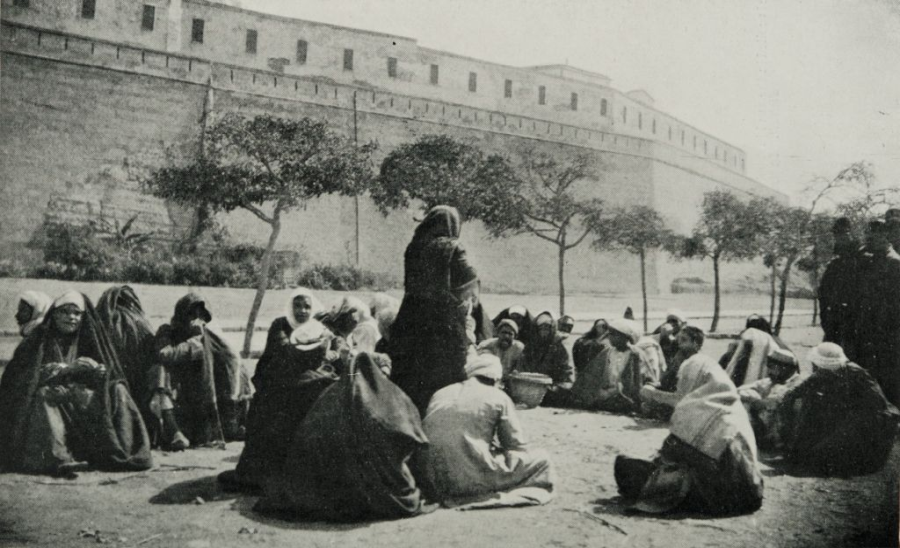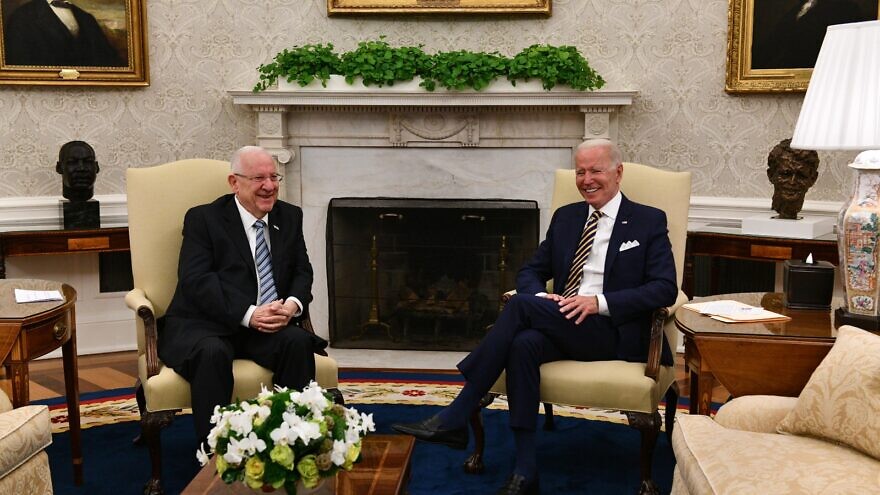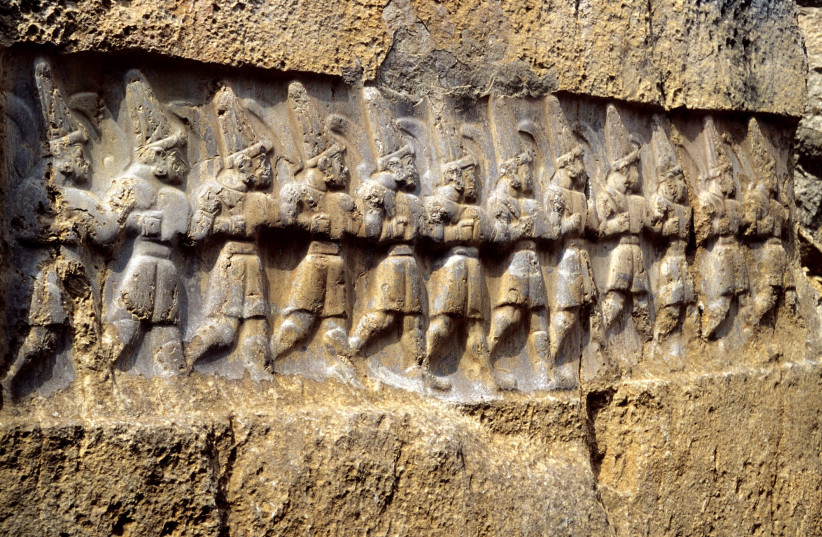 Gawędziarz opowiada historię z „Księgi tysiąca i jednej nocy”, 1911/ Wikipedia
Gawędziarz opowiada historię z „Księgi tysiąca i jednej nocy”, 1911/ Wikipedia
 Jesteśmy historiami, które o sobie snujemy [komentarz do parszy Bo]
Jesteśmy historiami, które o sobie snujemy [komentarz do parszy Bo]
RABIN JONATHAN SACKS
Tłumaczenie: Jolanta Różyło
PARSZA BO 1 LUTEGO 2020/ 6 SZWAT 5780
Zdarza się, że inni znają nas lepiej, niż my sami. W 2000 roku jeden z żydowskich instytutów badawczych zaproponował, aby Żydzi z Wielkiej Brytanii zostali uznani nie za wspólnotę religijną, ale grupę etniczną. W odpowiedzi na to nieżydowski dziennikarz Andrew Marr powiedział coś, co powinno być oczywiste: „Ta cała sprawa to brodzenie w płytkiej wodzie – im dalej, tym płycej”.
To, co powiedział później, uznałem za niezwykle inspirujące: „Żydzi zawsze mieli historie do opowiedzenia. Biblia to jedno z największych dzieł ludzkiego ducha i wyobraźni. Byli oni ofiarami wszystkiego, co w nowożytności najgorsze – odbiło się w nich jak w zwierciadle zachodnie szaleństwo. Przede wszystkim jednak mają za sobą historię kulturowej i genetycznej walki o przetrwanie, trwającej od czasów Imperium Rzymskiego aż do XXI wieku – walki tkanej ostrożnie pośród niezrozumiałości i wrogości plemion europejskich”[1].
Żydzi zawsze mieli historie do opowiedzenia – bardzo lubię te słowa. Rzeczywiście snucie historii od zawsze było centralnym elementem żydowskiej tradycji. Każda kultura ma swoje opowieści (nieżyjący już Elie Wiesel powiedział kiedyś, że „Bóg stworzył człowieka, bo uwielbia historie”). Ta tradycja sięga jeszcze zapewne czasów, gdy nasi przodkowie – myśliwi i zbieracze – opowiadali sobie nocą historie przy ognisku. Ludzie to gawędziarze.
W parszy Bo, na chwilę przed wyjściem z Egiptu, Mojżesz w niezwykły sposób trzykrotnie powtarza Izraelitom, że mają oni opowiadać tę historię przyszłym pokoleniom:
- A gdy wtedy powiedzą wam dzieci wasze: cóż to za obrzęd u was? To odpowiecie: ofiara to paschalna Wiekuistemu, który przeszedł mimo domów synów Israelskich w Micraim, gdy raził Micrejczyków (Szemot 12:26-27).
- I opowiesz synowi twojemu dnia onego, mówiąc: to dla tego, co uczynił mi Wiekuisty, gdym wychodził z Micraim (13:8).
- I będzie, gdy zapyta się ciebie syn twój w przyszłości mówiąc: „Cóż to jest?” to powiesz mu: „Przemożną ręką wywiódł nas Wiekuisty z Micraim, z domu niewolników” (13:14).
Izraelici nie opuścili jeszcze Egiptu, a Mojżesz już uczył ich, w jaki sposób opowiadać o tym swoim dzieciom i wnukom. To dość niezwykłe. Dlaczego to zrobił? Skąd ta obsesja opowiadania historii?
Najprostsza odpowiedź brzmiałaby: jesteśmy historiami, które o sobie snujemy[2]. Istnieje nierozerwalna więź między historią a tożsamością. Alasdair MacIntyre, odpowiedzialny za włączenie tej idei do myśli współczesnej, pisał, że „człowiek zarówno w swoich działaniach i praktykach, jak i w fikcjach jest gawędziarzem[3]”. Uczymy się tego, kim jesteśmy, rozumiejąc, w jakie historie byliśmy uwikłani.
Jarome Bruner twierdził, że prowadzona narracja jest kluczowa dla konstruowania znaczenia, a znaczenie sprawia, że kondycja ludzka jest ludzka. Żaden komputer, zanim zrobi to, do czego został stworzony, nie musi być przekonany, że jego istnienie ma cel. Gen nie potrzebuje motywacji, a wirus trenera. Aby zrozumieć, jak działają, nie musimy badać ich świadomości, bo takowej nie posiadają. Ludzie są jednak świadomi. Wykonujemy pewne działania dzisiaj ze względu na to, co przytrafiło nam się wczoraj, albo licząc na coś, co może wydarzyć się jutro. Nawet najmniejsze wyjaśnienie podejmowanych przez nas decyzji jest opowiadaniem historii. Przypatrzmy się z pozoru prozaicznej scenie zamawiania sałatki w restauracji – ktoś nie je mięsa, ktoś inny chce schudnąć, a ktoś jeszcze inny przestrzega zasad narzuconych przez religię. Trzy niezwykle podobne do siebie sytuacje są elementami zupełnie innych historii – akt zamówienia sałatki ma inne znaczenie dla każdej z tych osób.
Co jednak gawędziarstwo ma wspólnego z exodusem?
Jeden z najbardziej znaczących cytatów o naturze żydowskiego istnienia, jaki znam, znajduje się w Uwagach nad rządem polskim Jeana-Jacquesa Rousseau z 1772 roku, choć wydawać by się to mogło ostatnim miejscem na tego rodzaju przemyślenia. Rousseau pisze o największych przywódcach politycznych w historii. Pierwszym z nich był Mojżesz, który „powziął i wykonał zdumiewające przedsięwzięcie: zorganizowania w naród roju nieszczęsnych zbiegów, bez sztuk, bez broni, bez talentów, bez cnót, bez odwagi, niemających na własność nawet pędzi ziemi”.
Mojżesz – pisze dalej Rousseau – „odważył się utworzyć z tej koczowniczej i niewolniczej hordy ciało polityczne, naród wolny, i kiedy błądziła w pustyni, nie mając kamienia pod głowę, nadał jej te urządzenia trwałe opierające się czasowi, losom i zdobywcom, których pięć tysięcy lat nie mogły zniszczyć, ani nawet nadwerężyć […]. Dzięki temu właśnie ten szczególny naród, tak często podbijany, tak często rozpraszany […] zachował się przecież do naszych czasów, rozrzucony między innymi narodami, nie mieszając się z nimi” [tłum. dr Maciej Starzewski].
Geniusz Mojżesza, jak twierdził Rousseau, zawierał się w charakterze praw, które odróżniały Żydów od reszty narodów. Ale to tylko połowa historii. Druga jej część zawarta jest w parszy Bo. Mowa o instytucji opowiadania historii, będącej podstawowym religijnym obowiązkiem każdego Żyda, o corocznym przypominaniu historii wyjścia z Egiptu, a w szczególności – o szczególnej roli dzieci. W aż trzech z czterech fragmentów Tory, które nakazują przekazywać opowieść o exodusie kolejnym pokoleniom (czwarty znajduje się w parszy Wa-etchanan), dzieci zadają pytania. Dlatego właśnie Mędrcy utrzymywali, że narracja nocy pesachowej powinna być prowadzona w konwencji odpowiedzi na pytania zadawane przez dzieci. Jeśli jesteśmy historią, którą o sobie opowiadamy, pozostaniemy sobą tak długo, jak długo będziemy tę historię pamiętać.
Ta idea znalazła odzwierciedlenie w pewnym niezwykłym spotkaniu. Tybetem od 1950 roku rządzą Chiny. Podczas powstania w 1959 roku Dalajlamie groziło śmiertelne niebezpieczeństwo, dlatego uciekł do Dharamsali w Indiach, gdzie przebywa do tej pory wraz z przedstawicielami tybetańskiego rządu. Zdając sobie sprawę z tego, że taka sytuacja może trwać jeszcze wiele lat, Dalajlama zwrócił się o radę do Żydów, których uznał za ekspertów w dziedzinie podtrzymywania tożsamości narodu na wygnaniu. Chciał wiedzieć, na czym polegał ich sekret. Historia tego trwającego tydzień spotkania opowiedziana została przez Rodgera Kamenetza w książce The Jew in the Lotus. Jedną z rzeczy, które wyjaśniono Dalajlamie, było znaczenie pamięci i opowiadania historii dla utrzymania kultury i tożsamości przy życiu. Przywódcy duchowi rozmawiali w szczególności o obchodach święta Pesach i o tradycji sederowej. W związku z tym w 1997 roku amerykańscy rabini i wysocy urzędnicy zorganizowali w Waszyngtonie specjalną kolację sederową, na którą zaproszono Dalajlamę. Tak napisał do zaproszonych gości:
PRENUMERATA
 Podczas naszego dialogu z rabinami oraz uczonymi Tybetańczycy poznali tajemnice duchowego przetrwania Żydów na wygnaniu – jedną z nich jest seder. Przez dwa tysiące lat, nawet w najtrudniejszych czasach, Żydzi wspominają wyswobodzenie się z niewoli, i to niesie nadzieję w czasach zwątpienia. Jesteśmy wdzięczni naszym żydowskim braciom i siostrom za dodanie do swojego święta wolności myśli o wolności narodu tybetańskiego.
Podczas naszego dialogu z rabinami oraz uczonymi Tybetańczycy poznali tajemnice duchowego przetrwania Żydów na wygnaniu – jedną z nich jest seder. Przez dwa tysiące lat, nawet w najtrudniejszych czasach, Żydzi wspominają wyswobodzenie się z niewoli, i to niesie nadzieję w czasach zwątpienia. Jesteśmy wdzięczni naszym żydowskim braciom i siostrom za dodanie do swojego święta wolności myśli o wolności narodu tybetańskiego.
Kultury kształtują się w poprzez opowieści, które same tworzą. Niektóre z historii odgrywają szczególną rolę w formowaniu samoświadomości tych, którzy je snują. Nazywamy je wielkimi motywami. Mówią o dużych grupach ludzi – plemionach, narodach i cywilizacjach. Ich rolą jest sprawić, aby przedstawiciele grupy trzymali się razem – niezależnie od mijającego czasu i zmieniającego się miejsca – i tworzyli wspólną tożsamość, przekazywaną dalej kolejnym pokoleniom.
Żadna z tych historii nie była tak potężna, jak historia wyjścia Izraelitów z Egiptu, której kontekst przedstawiony jest w parszy Bo. Ta opowieść dała Żydom najtrwalszą tożsamość spośród wszystkich narodów. W czasach ucisku dawała nadzieję na wolność, w czasach wygnania – na powrót do domu. Dwieście pokoleń żydowskich dzieci dowiedziało się z niej, kim są i gdzie przynależą. Exodus stał się znaną na całym świecie opowieścią o wolności, przyjętą przez zadziwiająco różne grupy – od siedemnastowiecznych purytan, przez dziewiętnastowiecznych Afroamerykanów, po współczesnych tybetańskich buddystów.
Wierzę, że jestem bohaterem historii naszego ludu i że muszę – tak jak my wszyscy – napisać swój własny rozdział. Być Żydem to czuć się częścią tej historii – żyć nią i robić wszystko, aby przekazywać ją kolejnym pokoleniom.
PRZEKAŻ DAROWIZNĘ
[1] Andrew Marr, „The Observer”, 14.05.2000 r.
[2]Alasdair MacIntyre, After Virtue: a study in moral theory, Londyn 1981; Dan P. McAdams, The Stories We Live By: Personal Myths And The Making Of The Self, Nowy Jork 1997.
[3]Tamże, s. 201.
Zawartość publikowanych artykułów i materiałów nie reprezentuje poglądów ani opinii Reunion’68,
ani też webmastera Blogu Reunion’68, chyba ze jest to wyraźnie zaznaczone.
Twoje uwagi, linki, własne artykuły lub wiadomości prześlij na adres:
webmaster@reunion68.com




